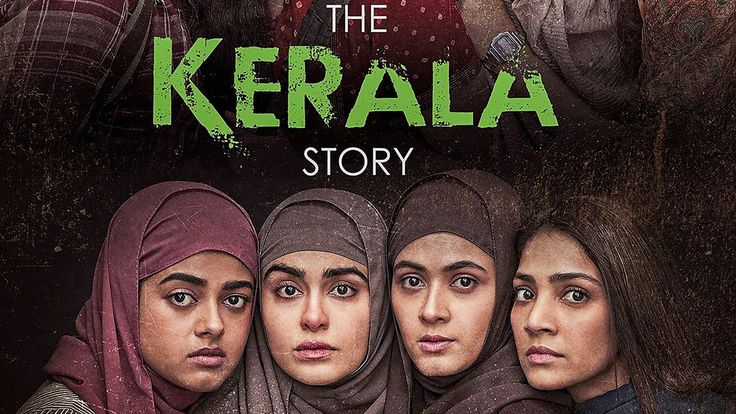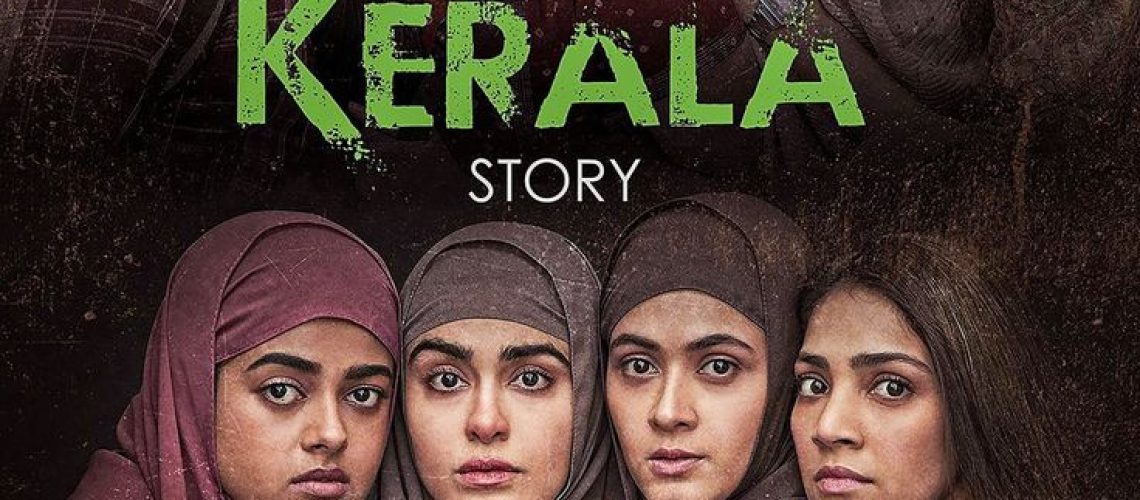Bollywood’s recent propaganda film The Kerala Story has rekindled anti-Muslim hate in India. The blatant distortion of facts in the film has deepened the Hindu-Muslim divide in an already polarized society. But the Indian government is turning a blind eye to it.
With the 2024 general elections in mind, Indian Prime Minister Narendra Modi has begun polarizing the country’s far-right Hindu populace by extending his support for yet another Islamophobic film. The Kerala Story, directed by Sudipto Sen, is based on a conspiracy theory that Hindu and Christian women are converting to Islam en masse. Raising a false alarm, the film claims that 32,000 women from the Indian mainland have joined the extremist outfit ISIS. The narrative as well as the propagation of this theme has been deemed grossly wrong and biased by its critics.
In the film, Sen juxtaposes the ruling Hindu nationalist Bharatiya Janata Party (BJP) government’s favorite conspiracy theory of “love jihad,” a negative term used by the right to describe a phenomenon whereby Muslim men woo Hindu women into marrying them and converting to Islam.
This anti-Muslim narrative, reinforced on the movie screen and online, has manifested itself in a structural otherization and hatred toward minorities. Over the course of nine years, anti-Muslim campaigns have given rise to large-scale demographic transformations and the displacement of nearly 50,000 members of the Muslim community in India. The Hindu nationalist party has been accused of using anti-conversion statutes carrying jail terms of up to ten years as a political tool to prevent interfaith marriages in several BJP-ruled states.
The United States Commission on International Religious Freedom also criticized the anti-conversion law in its recent report (1) and classified India as a “country of particular concern” for the second time in a row. “They [the law] impermissibly limit and punish an individual’s right to convert and right to persuade or support another individual to convert voluntarily,” the report says.
In late April 2023, the filmmakers released the first teaser claiming to tell “heart-breaking and gut-wrenching stories” of 32,000 females: an exaggeration. As a result, several political leaders and activists called for a widespread ban of the film. Soon after the misinformation had been debunked and multiple petitions filed, producer Vipul Amrutlal Shah revised the teaser, stating that the film is a “compilation of the true stories of three young girls.” The Supreme Court, however, declared the film fictional soon thereafter.

The Good Vs. Evil Debate
Since the rise of the Modi government in 2014, the Indian film industry has released multiple historical epics such as Bajirao Mastani, Padmaavat, Manikarnika, Panipat, Tanhaji and many more that, although inspired by history, are “retold” with imaginary twists. However, today’s wave of historical fiction in Bollywood largely focuses on pitting Hindus against Muslims to promote religious propaganda.
Such films target a particular section of the audience that plays “a politically-conscientizing role” in society and doesn’t look for historical accuracy. This is according to historian Arup Banerji. “They are co-opting figures from history and it’s a part of the BJP’s ever-advancing campaign to colonize people’s cultural beliefs. The idea is to make them so shiny and formidable that the audience shut their eyes to all that’s happening in the present,” Banerji says.
The problem begins with the negative representation of the Mughals as aggressive, irrational, barbarian and intrusive on screen, while the Hindu warriors are idealized as hypermasculine fighters against the Muslim “invaders” and end up sacrificing their lives for the country and its people.
Depicting these complex medieval epics through the lens of religious conflict, almost all of the films follow the exact same plot, glorifying Hindu morals against a “Muslim” antagonist.
Although the anti-Muslim agenda has been soaring in Bollywood for a few years, it reached its peak last year with The Kashmir Files, a commercial film that talked about the exodus of some 100,000 Hindu Kashmiri Pandits, who were systematically cleansed from the occupied Kashmir Valley by Muslims following an uprising in 1990. Filmmaker Vivek Agnihotri, who doesn’t even try to conceal his motivation, says “I am not just a filmmaker. I have an agenda.”
Starting in early 2015, the deliberate attack on Muslims has been reflected in the eerie and dark portrayal of the community on posters as well as in teasers and films that demonize Indian Muslims, who, in reality, are largely discriminated against and the target of derogatory racial and terrorism-related slurs as well as xenophobia. By contrast, their Hindu counterparts are portrayed in a positive light with hues of white and saffron clearly in line with the perennial “Good vs. Evil” theme.
Repercussions of Propaganda
One of the most controversial agenda-driven films, The Kerala Story, has been politically endorsed and exempted from being taxed in several BJP-governed states to make it accessible to a wider audience. Smriti Irani, the BJP’s Union Minister for Women and Child Development, has described the film as “a wake-up call” and criticized those opposed to it as “supporters” of terror groups.
The film has incited violence across the country. Kashmiri Muslim students in Jammu’s Government Medical College were attacked for objecting to the film in the college’s WhatsApp study group. A similar incident occurred in the western state of Maharashtra’s Akola region, where social media posts led to a 40-year-old being killed, and several people being arrested for rioting.
The former Jammu and Kashmir Chief Minister Mehbooba Mufti, whose People’s Democratic Party was in a four-year alliance with the Modi government, condemned the latter’s hate politics: “The blood of innocents is being spilled to quench BJP’s insatiable thirst for petty electoral dividends.”
Violence also broke out last year following the release of The Kashmir Files. Right-wing Hindus who had seen the film in movie theaters spilled into the streets chanting slogans such as “Shoot the traitors,” “Death to Muslims,” and “We will have our revenge.” They were later joined by several other hate-filled voices turning theatres into arenas for murderous anti-Muslim rallies and hate speech.
Recounting her experience watching the film, prominent Indian journalist Rana Ayyub wrote, “I left the theater, just 30 minutes into the movie, feeling humiliated and physically unsafe. A man yelled at me “Ja Pakistan!” (Go to Pakistan).
The film that community members feared could “trigger a massacre of Muslims” was called out for being a “propaganda, vulgar movie, inappropriate for an artistic competitive section” by jury head and filmmaker Nadav Lapid at the 53rd International Film Festival.
Brimming with factual inaccuracies and anti-Muslim sentiment, the propaganda films The Kashmir Files and The Kerala Story have been praised and promoted by Prime Minister Modi and his BJP government for “bringing out the truth”, further demonizing India’s Muslim minority. According to Citizens for Peace and Justice, a non-profit organization, nearly 20 such anti-Muslim propaganda films including 72 Hoorian, Accident or Conspiracy: Godhra, Tipu, Ajmer 92 are scheduled to be released prior to the elections next year to “keep divisions rife”.
Contextualizing the current polarized atmosphere, political psychologist Ashish Nandy noted that “popular cinema not merely shapes and is shaped by politics, it constitutes the language for a new form of politics” since its “focus is on the key concerns of some of the most articulate, vibrant and volatile sectors of the Indian electorate today” (2).
The situation in India today seems grim in terms of the propaganda tools used by far-right Hindu groups to promote Indian society’s fear of Muslims. The present regime is willing to go to any length to vilify Muslims so as to hold on to the reins of power for a third consecutive term. Whether pushing Islamophobic narratives and bashing Pakistan will pave their way to power depends on the opposition they face and the level of polarization in society. But minorities will continue to feel the xenophobia that is rampant across India.
Aparajita Ghosh
References
- Wilson, L., “Issue Update: India’s State-Level Anti-Conversion Laws,” 2023.
- Nandy, A., “Introduction: Indian Popular Cinema as a Slum’s Eye View of Politics,” 1998.




